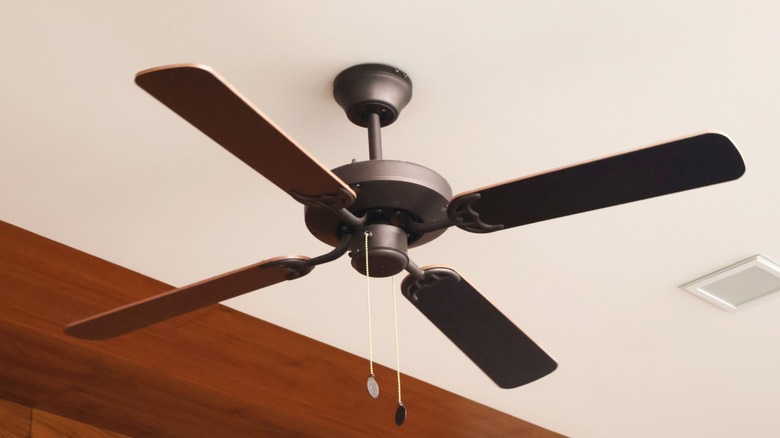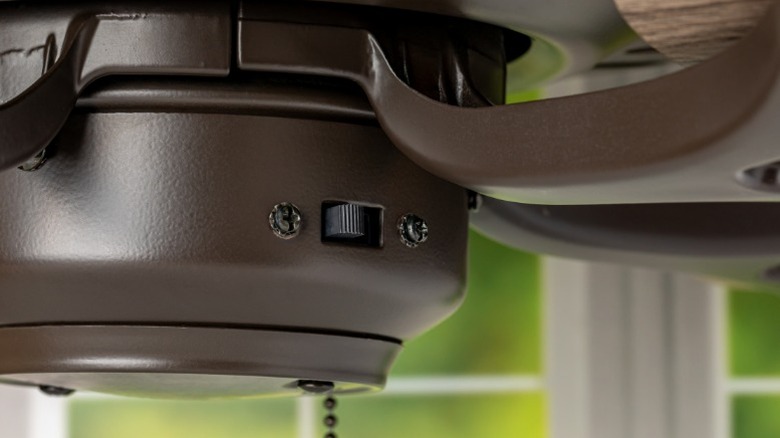
Ceiling fans are typically wired into a building's electrical system, allowing you to operate them with wall switches, pull cables, and even remote controls for smart ceiling fans. While many also feature a lighting fixture of some kind, ceiling fans usually don't feature many knobs or buttons. However, there is often another feature on ceiling fans, though many people may not be aware that it exists. If you've ever noticed a switch on your ceiling fan and wondered what it's for, you're not alone.
These switches tend to be located inconspicuously on the fan's motor body (i.e., the base part of the fan where the fins attach), and if you're not looking for the switch or paying close attention to it, it's easy to forget about its existence.
These switches actually serve a surprisingly useful function, though. They're designed to reverse the direction that your ceiling fan spins. While that may sound insignificant, reversing the direction that the fins spin in can have several benefits, so much so that many people reverse their fans multiple times a year. If you're interested in learning more about why you may want to reverse your ceiling fan's spinning direction, stick around. Here's what you need to know.
Read more: 8 Little-Known Amazon Gadgets Worth Trying For Yourself
What's The Point Of Reversing The Fan's Direction?

As mentioned, the switch on your ceiling fan is built to reverse the direction in which your fan's fins spin. To understand why this is an important feature, it may be helpful to quickly explain how air works at different temperatures. If you've ever walked into the upstairs section of a building on a hot day, you probably noticed the difference in temperature between the ground floor and any floors higher up. That's because hot air rises, and it happens due to a combination of factors. Because hot air is less dense than cooler air, our planet's gravitational field pulls colder air downward, displacing the warmer air and causing it to rise.
Now that we understand how air behaves at different temperatures, we can explain why reversing your ceiling fan's direction is a good idea. During hot months, your ceiling fan is meant to help keep you cool. To accomplish that, we set our ceiling fans so that they spin counter clockwise. This causes the fins to create an airstream blowing downward, which can have a cooling effect. During cold months, ceiling fans should be set so that they spin clockwise. This allows the fan's fins to create an upward airflow, which pulls cold air up and displaces the hot air that has collected around the ceiling. The fan's winter setting is designed to help spread that warm air more evenly around the room, helping to cut down on heating costs and prevent chilly drafts.
Want the latest in tech and auto trends? Subscribe to our free newsletter for the latest headlines, expert guides, and how-to tips, one email at a time.
Read the original article on SlashGear.










